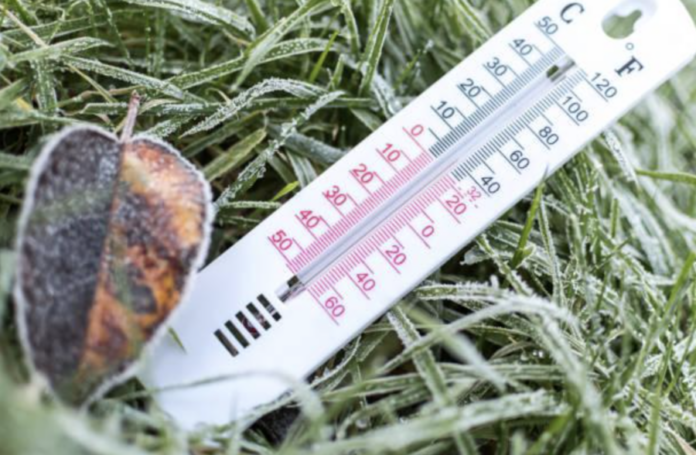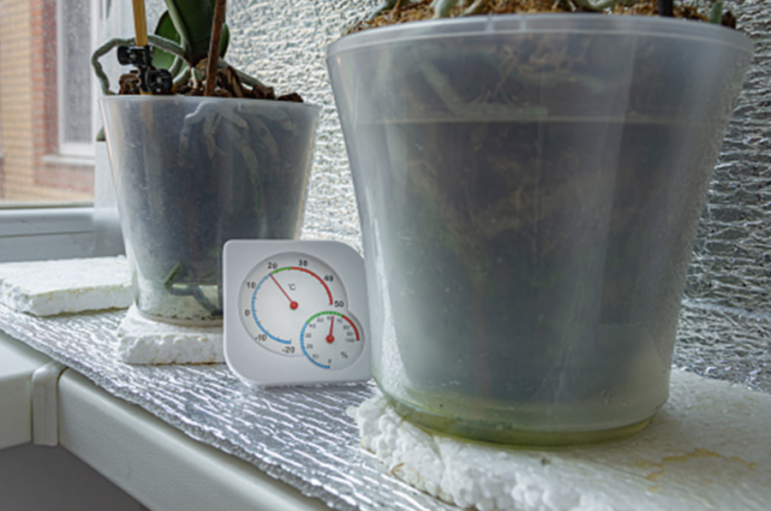Regulating cannabis temperature and humidity is necessary for successful growing. Moreover, ideal temperature and humidity levels differ across your marijuana’s development stages. But generally, you must maintain temperatures at 70 to 80 degrees Fahrenheit (°F) and relative humidity at 40 to 60% throughout. This post shares all the necessary insights for maintaining these two essential cannabis growth parameters.
Temperatures and Humidity Levels: Are They the Same?
Let’s start by differentiating temperature from humidity. Please note that plants take water via their roots and pull it up their stems into the leaves before releasing it through tiny openings on leaf surfaces (the process is called transpiration). Higher temperatures make plants lose more water and vice versa. They also lose more water when humidity is low.
Humidity and temperature levels are closely related. Humidity measures how much water remains in the air. Relative humidity or RH measures water quantities in the air compared to the maximum amounts that can stay there at that temperature. That means warm air holds more water vapor than cold air.
Therefore, it is vital to get the warmest air in a growing environment and remove it on time to let in the fresh air. Otherwise, leaving warm air alone can provide excess vapor that could hamper optimal growth conditions.
Cannabis needs constant water quantities that fluctuate based on the optimal cannabis humidity level requirements. During high humidity, cannabis uses its leaves to absorb moisture from the air, reducing the water drawn from its roots. Inversely, low humidity levels make marijuana absorb more water through the roots. Thus, monitoring and maintaining the correct humidity levels promote nutrient-rich, healthy, and strong leafy plants. Get more valuable information on becoming a successful grower at https://askgrowers.com/blog/guide-on-cannabis-growers-who-they-are-and-how-to-become-a-cultivator.
Benefits of Monitoring Temperatures and Humidity Levels
Please note that temperature is critical to successful cannabis development and growth. Alongside other essential factors like light levels, carbon dioxide, water, nutrients, and air humidity, temperature impacts marijuana’s growth and harvest. However, these elements can only produce the above effect when you balance and regulate them. Regulating temperature directly affects plants in the short and long term.
High temperature significantly influences cannabis growth and development. Any temperature increase by 10-15 °C above the normal level causes heat stress or even a heat shock. This increase can combine with other natural factors. For example, a natural temperature rise can come from direct sunlight. Thus, increased light and high-temperature conditions usually overlap.
So, why should you regulate your plantation’s temperature and humidity levels? What happens when you don’t control these two elements? Not monitoring these essential growth factors can cause the following issues:
- Retarded growth. High humidity levels aren’t ideal for cannabis’ initial growth stage. Thus, your plants will suffer retarded growth because young marijuana plants grow better in high-humidity conditions than mature ones.
- Bud mold/rot. This condition happens when mold takes over your cannabis’ inside, making buds useless.
- White powder mildew. White Powder Mildew (WPM) is a fast-spreading fungal disease producing a white powder or mildew covering marijuana. Detecting it early allows you to prevent its spread before it renders plants useless.
- Nutrient challenges. Your marijuana may also suffer from this condition, where it takes in excess nutrients at once, yellowing its leaves and making tips appear burned. This condition is also called nutrient burn.
- Leaf browning. Cannabis also suffers from browning and drying leaf edges if it experiences low humidity. This condition is common in outdoor trees in August when leaves turn brittle, dry, and brown due to increased heat.
- A defective root system. Freezing temperatures slow down marijuana’s metabolism, weakening its root system. Your plants might die if temperatures drop below 12 degrees.
Optimal Temperature and Humidity Levels for Different Marijuana Stages
Cannabis needs different optimal temperature and humidity levels during its various development stages. Below are the the instructions for each stage.
The Germination Stage
Marijuana’s germination stage is its foundation. Therefore, the conditions it gets exposed to here determine its growth. Indoor germination allows you to control the temperatures better. The young plants need high-temperature levels of between 22°C and 26°C. During this stage, the temperature must not fall below 20°C or rise above 30°C.
When germinating plants in a greenhouse, temperatures can get too hot, requiring close monitoring. Therefore, monitor humidity levels and remember to add water when seed trays dry up but without overdoing it. Otherwise, the seeds won’t germinate.
The Seedling Phase
The seedling stage is also critical and requires close temperature and humidity monitoring. Your seedlings need a warm, sunny, and humid environment with ample air circulation at this stage. The temperatures here should range between 20°C and 25°C.
Your plants’ roots are undeveloped, requiring heat and light exposure. Challenges usually arise when the temperature level becomes too high because immature seedlings can’t withstand heat. Therefore, we recommend maintaining an optimal indoor environment of 20-25°C with the lights on.
You must expose your cannabis to high humidity levels to let the seedlings absorb sufficient water through their leaves. Humidity levels of 65% to 70% are enough.
The Vegetative Stage
The vegetative phase is more relaxing on your side because marijuana is maturing and becoming stronger. Moreover, plants can better cope with high heat conditions and resist heat and cold. You may raise the temperature to as high as 30ºC.
During vegetation, the roots are adequately developed to absorb more water. Therefore, you may reduce the humidity levels by 5% weekly. The plants’ ideal relative humidity levels should range between 40% and 70%.
The Flowering Phase
The flowering stage is the last cycle. Here, we recommend maintaining warm temperature levels similar to those in the seedling phase. You must ensure your plants grow under a temperature of 20°C to 25°C. Otherwise, their buds can burn terpenes and lose their therapeutic potency.
During the final budding phase of your plants, reduce humidity in your growing room to 40%-50%. This reduction promotes high-quality resin and terpene content with a more aromatic and flavorful harvest. We also recommend maintaining a temperature variance of 5°C when the lights are off.
Tips for Regulating Indoor and Outdoor Humidity Levels
So, how do you regulate indoor and outdoor humidity levels? This section offers actionable tips to help you do that.
Indoors
Do the following if your cultivation space is overly humid:
- Use an air conditioner. Cool the warm area using an air conditioner to remove the arm air retaining water.
- Use a dehumidifier. This device is vital because it draws air over a cooling system and extracts excess moisture.
- Water when lights are off. Dark hours lower transpiration rates. Therefore, there are no extra humidity spikes.
- Boost the airflow. You can boost your grow space’s airflow using exhaust fans and supplementing them with small ventilators.
You may raise low humidity levels by doing the following:
- Installing a humidifier. This appliance dispenses tiny water particles into the air to increase humidity.
- Placing open water containers around your cannabis. This measure allows humidity to increase as the water evaporates.
- Misting foliage. This temporary measure boosts your cannabis’ access to moisture while addressing its humidity.
Outdoors
Caring for budding cannabis is also vital. Your plants can take weeks to recover after getting exposed to overly humid or dry conditions. Do the following to maintain optimal humidity when the weather is too hot.
- Water your plants before sunrise or after sunset. This timing saves your plants the possibility of losing excess water when the sun is hottest in the sky.
- Top-dress the soil. You can also address outdoor humidity issues by top-dressing your soil. Adding a layer of mulch or peat moss makes your grow medium keep moisture.
- Garden climbers. For those interested in optimizing their outdoor spaces, selecting the right plant varieties is essential. Incorporating garden climbers among your plant selection not only adds vertical interest but also offers shade and increased biodiversity to your growing environment.
- Spray the foliage. If you use foliage, you can spray it with water during hot weather to soften plants and help them breathe well.
- Hang damp towels around plants. Hanging damp towels around your marijuana increases humidity around your plants when the water evaporates.
Do the following to deal with abnormally high humidity levels:
- Remove windbreaks. Reduce high humidity by removing windbreaks around your marijuana garden. This move increases cold air circulation, which carries lesser moisture.
- Don’t over-water. Address high humidity levels by not watering your plants because transpiration increases humidity.
- Defoliate your garden. Prune excessive leaves because thin foliage produces less moisture and limits humidity levels.
Bottom Line
There you go with everything you need to know to regulate optimal temperature and humidity in your cannabis grow. We hope you will use this information to give your cannabis the best temperature and humidity levels for optimal yields.
Lana Braslavska, an avid weed researcher and blogger at AskGrowers, is behind this analytical material. Lana establishes bonds with reputable cannabis brands and spreads expert knowledge about cannabis cultivation among users to help them grow weed safely and productively.
-In collaboration with AskGrowers



